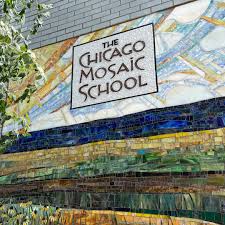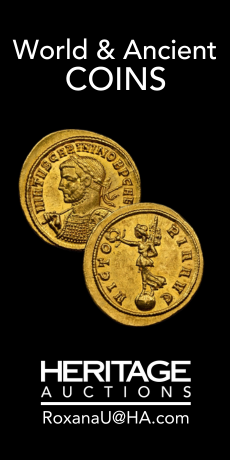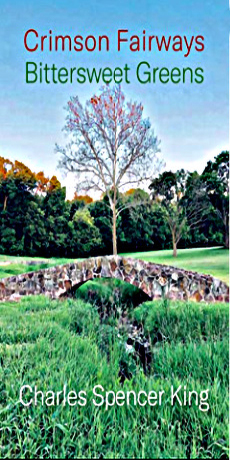
By Judy Carmack Bross
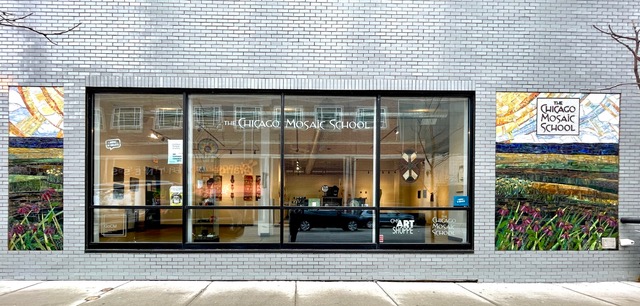
From the ancient mosaic tesserae, which are thousands of years old, at the Institute for the Study of Ancient Cultures at the University of Chicago to the current exhibition at the Chicago Mosaic School and Gallery of Contemporary Mosaics on West Granville, this intricate art form that originated in Mesopotamia is now focused in Chicago.
One of three mosaic schools in the world and the only one in the U.S., students at The Chicago Mosaic School learn to create stunning images using small pieces of colored glass, stone, pottery, and other materials. Artists showcase all aspects of mosaics, from classic reproductions and large-scale installations to contemporary methods in the Gallery’s exhibits.

“Verde” by Sara Hawes.
We spoke with the School’s founder, Karen Ami, and Executive Director, Lucy Senner, about this Chicago wonder.
“Mastery of mosaics requires a relationship with its many parts and disciplines, such as sculpture, drawing, and ceramics. It is actually more akin to sculpture,” Ami said. “I first became interested when I visited Pompeii as a teenager. I wanted to study mosaics in college but found no opportunities in the U.S., so I went to Venice to study at the Orsoni studio there. I WAS also able to visit the nearby island of Torcello, where I fell in love with the ancient mosaic, The Last Judgement. The other mosaic schools worldwide are in Italy, Ravenna, and Spilimbergo. Some of the oldest examples of mosaics made with clay cones can be found at the Pergamon Museum in Berlin, which is unfortunately closed now for renovation. Remnants of those mosaics can be seen here at the Institute for the Study of Ancient Cultures at the University of Chicago.
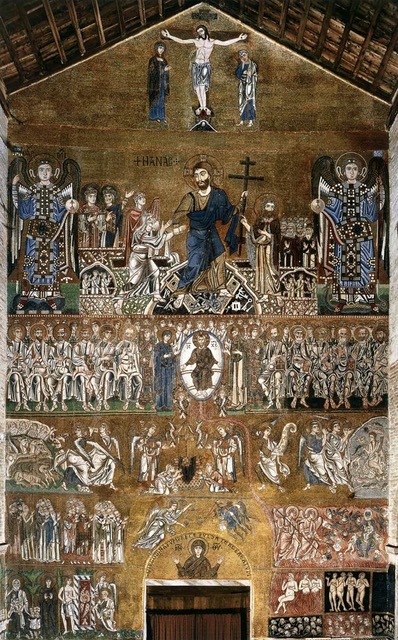
The magnificent 12th Century mosaic of the Last Judgment from the cathedral of Santa Maria Assunta on Torcello near Venice.
“There are many different types of mosaic art. One is bricolage, which is less technical and can be a community format and thus more haphazard and less sustainable. Artists, such as those doing the viaduct art, draw from diverse things that might be available.
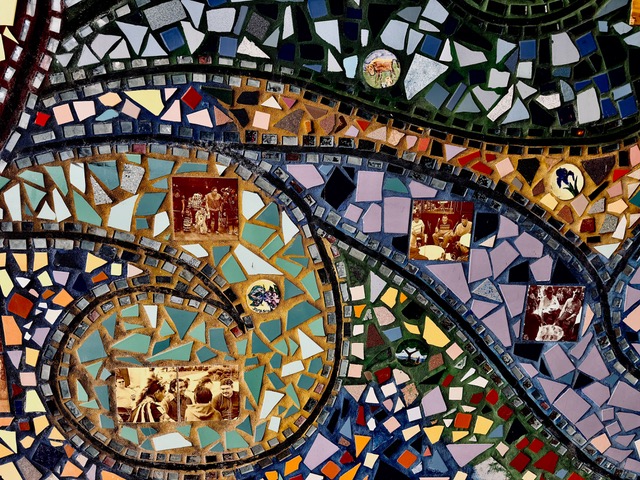

Nick Wilder, whose photo essays enhance the pages of Classic Chicago, recently photographed these mosaics under Lake Shore Drive which Ami terms as bricolage.
“Mosaics have many different approaches and are more technical and skills based. Some may replicate a historic work, while others create something very different.”
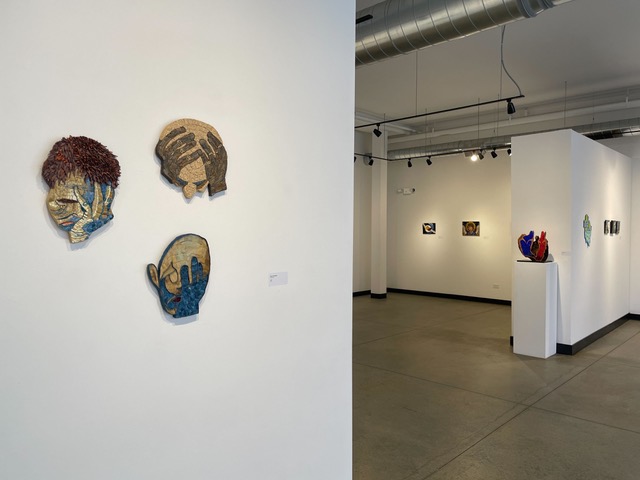
Many school groups visit and classes are offered from intensive workshops to six-week series at different ability levels.
“Students may begin with sheet or stained glass and then progress to the Byzantine glass known as smalti. They might work from a template, and the pieces of glass are held together by weldbond glue and then grouted at the end,” Ami said.
Above the storefront gallery are 10 studios for its students and an area for an artist in residence.
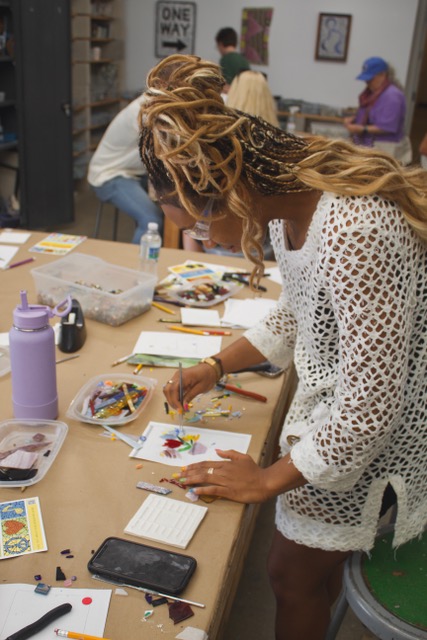
Senner described the Artist in Residence Program:
“This CMS program supports a broad range of artists working in communities outside of the Chicago area. CMS Resident Artists bring new resources, perspectives, and professional connections to the diverse audiences that the school serves. This includes first-time mosaic students, emerging artists, and professional and established artists. This may bring opportunities for creating mosaic work with public programming and educational opportunities. Our Residence Program strives to increase public awareness and appreciation of mosaic art and its role in contemporary art practices.
“CMS Artist Residence receives housing and studio space to create and expand their art practice. While in residence, artists will become an important part of our community through shared art practices, new conversations, and connections between members of our community.
“Throughout the year, we will welcome mid-career and established artists from around the world to take advantage of this unique experience at CMS. Resident Artists will enjoy 24/7 access to the studio and receive support from our faculty and staff. The duration, focus, and activities of each residency will be tailored to the needs and priorities of each individual artist.”
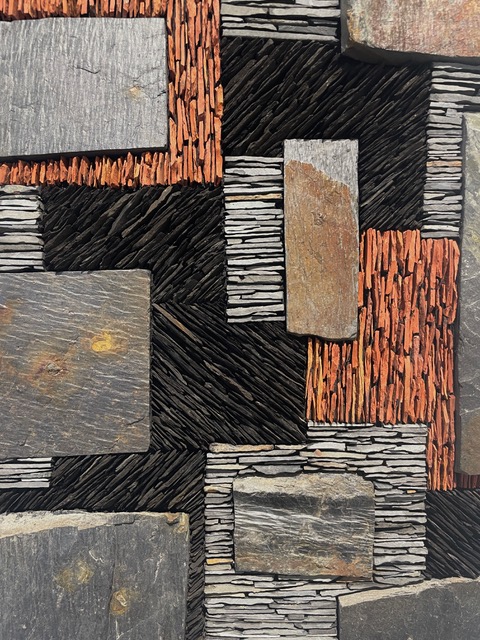 |
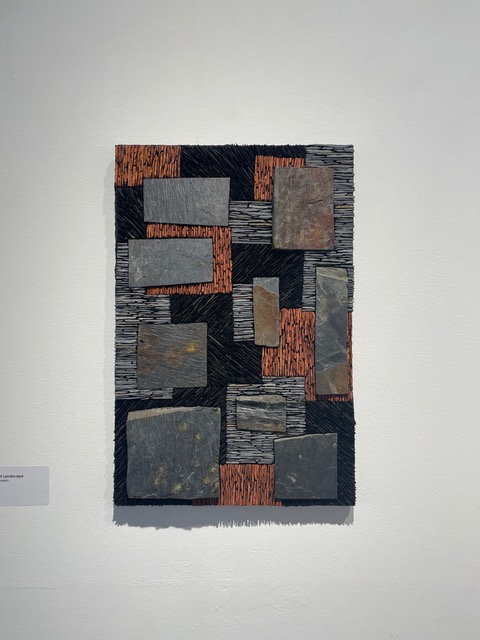 |
“Underground Landscape by author and mosaic artist Candice Klopfenstein, who has a studio at the school, exhibits this mosaic in “Class Act” the current show up until the end of February.
We asked Candice how she became interested in learning mosaic art.
“I first became interested in learning to create a mosaic when I had a do-it-yourself project for my home. I wanted to make a mosaic tabletop and needed technical help. The Chicago Mosaic School was the perfect place for this. They offered basic classes, which made the process of learning to make mosaics very approachable for a beginner like me. As I fell in love with the medium, the school offered a variety of classes and workshops that helped me continue to learn and grow as an artist.”
We wanted to know what the most difficult part of doing mosaics is and what brings the most pleasure. Klopfenstein told us:
“Creating a mosaic is a slow art form, with each piece of glass, stone or other materials being hand-cut. But there is a beautiful feeling that I experience as I take an idea for a mosaic and see it take shape.
“I have taken classes in metalworking, which has been beautiful and challenging to explore. I have ideas for combining metalwork and mosaic in a sculptural form, which I hope to pursue in the future.
“There are so many things I love about having a studio above the Chicago Mosaic School, and being a part of the mosaic community there. I love the friendships with other mosaic artists, being able to share ideas, get advice and/or feedback about works in progress, having access to supplies through the CMS Art Shoppe, and overall being continually inspired by an amazing group of people – the artists and staff who are a part of CMS.”
Watch for a new exhibition opening at the Gallery of Contemporary Mosaics March 1. To learn more about exhibits at the Gallery of Contemporary Mosaics at 1127 West Granville, visit: gallerygocm.com
To learn more about the Chicago Mosaic School at the same address visit: chicagomosaicschool.org



